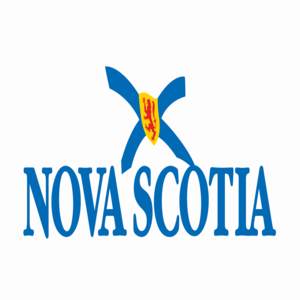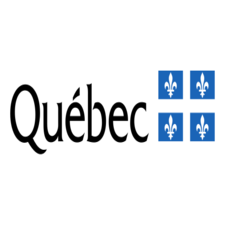RI_538
Type of resources
Available actions
Topics
Keywords
Contact for the resource
Provided by
Formats
Representation types
Update frequencies
status
-

Inventory of fire hydrants located on the territory of the City of Longueuil and its positioning.**This third party metadata element was translated using an automated translation tool (Amazon Translate).**
-

List of all the civic addresses of the City of Longueuil with their geographic coordinates.**This third party metadata element was translated using an automated translation tool (Amazon Translate).**
-

This dataset provides geospatial polygon boundaries for marine bivalve shellfish harvest area classification in New Brunswick, Canada. These data represent the five classification categories of marine bivalve shellfish harvest areas (Approved; Conditionally Approved; Restricted; Conditionally Restricted; and Prohibited) under the Canadian Shellfish Sanitation Program (CSSP). Data are collected by Environment and Climate Change Canada (ECCC) for the purpose of making applicable classification recommendations on the basis of sanitary and water quality survey results. ECCC recommendations are reviewed and adopted by Regional Interdepartmental Shellfish Committees prior to regulatory implementation by Fisheries and Oceans Canada (DFO). These geographic data are for illustrative purposes only; they show shellfish harvest area classifications when in Open Status. The classification may be superseded at any time by regulatory orders issued by DFO, which place areas in Closed Status, due to conditions such as sewage overflows or elevated biotoxin levels. For further information about the current status and boundary coordinates for areas under Prohibition Order, please contact your local DFO office. This dataset is 'Deprecated'. Please use updated source here. https://open.canada.ca/data/en/dataset/7aef69b5-3aaf-4d50-bb86-083031e6dc47
-

This dataset provides the spatial locations of provincial roads that are not exempt from Spring Weight Restrictions as they are imposed. For the exempt roads please check https://data.novascotia.ca/Roads-Driving-and-Transport/Spring-Weight-Restrictions-Exempt-Roads/qusm-8w98
-

List of active factories with permits consuming more than 2000 cubic meters of unworked woody material, such as roundwood, shavings, sawdust, planers, bark, etc. In addition, category 8 is still included. It is represented by pulp and paper mills that do not require wood processing permits since their consumer products are mainly related to commercial pulp and fibers recovered from paper, cardboard or other materials.**This third party metadata element was translated using an automated translation tool (Amazon Translate).**
-

__The link: *Access the data directory* is available in the section*Dataset Description Sheets; Additional Information*__. The **dendrometric lidar map** presents various dendrometric characteristics useful in particular in forest planning. It is a product in vector format that is complementary to the results of forest compilations found in the [Original Ecoforest Map and Current Inventory Results] (https://www.donneesquebec.ca/recherche/dataset/resultats-d-inventaire-et-carte-ecoforestiere) and in the [Results of forest compilations by forel] (https://www.donneesquebec.ca/recherche/dataset/compilations-forestieres-originales-par-forel-methode-k-nn). The geometric entities defined from the lidar data are at a finer scale than those in the ecoforest map. The main variables predicted and accessible in the product are as follows: + Usable volume per hectare by species, species group and certain diameter groups + Volume per hectare distributed by product for certain species groups + Basal area and number of stems per hectare for certain species groups + Average usable volume per rod and average diameter for certain species groups The volumes compiled in the lidar dendrometric map are variables distinct from the gross standing market volume predicted in the other forest compilation results, in the [Cubing rate and prediction models] ] (https://www.donneesquebec.ca/recherche/dataset/tarif-de-cubage) and for the stems counted in the sample plots of the ecoforest inventory of southern Quebec, for example in the [Temporary sample plots of the fifth inventory] (https://www.donneesquebec.ca/recherche/dataset/placettes-echantillons-temporaires-du-cinquieme-inventaire). This distinct volume is here qualified as “usable” and it excludes woody material between 9.1 cm in diameter without bark and 9.1 cm with bark. The published literature clarifies the differences between volume variables. This product is available for territories (planning unit, private forest development agency or residual forest territory) with a lidar acquisition and affecting the bioclimatic domains of fir to yellow birch, fir to white birch and spruce moss. Product coverage is not complete and will evolve over the years depending on the lidar acquisition. __ ⚠️ Notes: __ It is possible to use the [lidar dendrometric data preparation tool] (https://www.donneesquebec.ca/recherche/dataset/carte_dendrometrique_lidar/resource/d447ac59-8310-4fad-95f7-7495a3624466) to study one or more sectors at a finer scale than that of the ecoforest map. The [Lidar dendrometric tool user guide] (https://mrnf.gouv.qc.ca/nos-publications/guide-outil-dendrometrique-lidar/) presents the methodology for its application to meet the needs of operational forest harvest planning.**This third party metadata element was translated using an automated translation tool (Amazon Translate).**
-

Mapping of electrical terminals on the territory of the City of Longueuil.**This third party metadata element was translated using an automated translation tool (Amazon Translate).**
-

Data includes: * The Lake Superior watershed * The Lake Huron watershed * The Lake Erie watershed * The Lake Ontario watershed * The St. Lawrence River watershed
-

This dataset provides marine bacteriological water quality data for bivalve shellfish harvest areas in British Columbia, Canada. Shellfish harvest area water temperature and salinity data are also provided as adjuncts to the interpretation of fecal coliform density data. The latter is the indicator of fecal matter contamination monitored annually by Environment and Climate Change Canada (ECCC) within the framework of the Canadian Shellfish Sanitation Program (CSSP). The geospatial positions of the sampling sites are also provided. These data are collected by ECCC for the purpose of making recommendations on the classification of shellfish harvest area waters. ECCC recommendations are reviewed and adopted by Regional Interdepartmental Shellfish Committees prior to regulatory implementation by Fisheries and Oceans Canada (DFO). This dataset is 'Deprecated'. Please use updated source here. https://open.canada.ca/data/en/dataset/6417332a-7f37-49bd-8be9-ce0402deed2a
-
The dataset includes two data products derived from the Visible Infrared Imaging Radiometer Suite (VIIRS) imager operated by the US National Oceanic and Atmospheric Administration (NOAA) onboard Suomi National Polar-Orbiting Partnership (SNPP) satellite: 1) Normalized Difference Vegetation Index (NDVI) 2) Snow Mask (Snow) with supplementary information about data quality and scene identification Each product, NDVI and Snow, has been derived at two spatial resolutions: 1) I-band resolution for 250-m spatial grid (VIIRS image bands I1 and I2) 2) M-band resolution for 500-m spatial grid (VIIRS moderate resolution bands M5 and M7) Datasets are produced with a daily temporal frequency, i.e. one file per day. The study area with the size of 5,700 km × 4,800 km covers Canada and neighboring regions (Trishchenko, 2019). The VIIRS time series are produced from VIIRS /SNPP imagery at CCRS from January 1, 2017.
 Arctic SDI catalogue
Arctic SDI catalogue